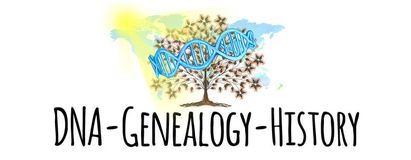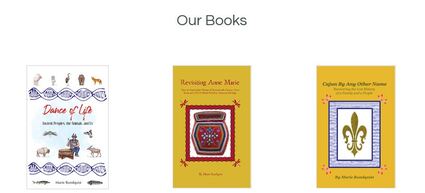|
Genealogical Case Study concerning the “Hyard” and “Caplan” families of the Gaspé and Baie-des-Chaleurs regions of New Brunswick/Québec by Christian Boudreau, Posted with the author's permission, June 14, 2020 This case study concerns a man named “Jean Hyard.” So why is Jean so important? Well, if we turn to the registers of the Parish of Saint-Louis in Kamouraska, Québec, we find that a “Jeune viève Hyard” (Geneviève Hyard), daughter of “Jean Hyard le metif” (“Jean Hyard the métif”) and “Charlotte Michaud” on July 26, 1761. So why is this baptismal record so important? Well, its Importance lies in the fact that Jean is referred to as “le métif” (“the métif”), which during that time period is indicative of someone of “Sauvage” (First Nations) and “French” ancestry. So, this would mean that Jean was mixed-blooded. The fact that Geneviève is stated to have been the “legitimate” daughter of Jean and Charlotte is indicative that Jean and Charlotte were legally married. Therefore, a marriage record for Jean and Charlotte would likely exist, or otherwise would have at one time existed. If we continue to examine the registers of the Parish of Saint-Louis in Kamouraska, Québec we find that “Jean Hyard” (Jean Hyard), the son of the deceased “Francois hyard” (François Hyard) and of the deceased “Marie Louise caplant” (Marie-Louise Caplan) married “marie charlotte Michaud” (Marie Charlotte Michaud) there on June 23, 1760, approximately one year prior to the baptism of their daughter, the previously-mentioned Geneviève Hyard. Marie Charlotte is stated in this act to have been the widow of “Gabriel paradis” (Gabriel Paradis). It’s interesting to note that no mention of the race/ethnic origins of any people present at the marriage ceremony, including Jean, is made in this act. So, if Jean Hyard is stated to have been “le métif” (“the métif”) in his daughter, “Jeune viève Hyard’s” (Geneviève Hyard) baptismal record, where does his “Sauvage” (First Nations) blood come from? Well, in relation to this family, according to pages 54 and 55 of an April 11, 2011 document entitled, “Dictionnaire généalogique des familles acadiennes: Ajouts et corrections” (see https://www.umoncton.ca/umcm-ceaac/node/38) created by world-renowned Acadian Researcher/Genealogist, Stephen A. White, which is basically a document containing additions and corrections to Mr. White’s “Dictionnaire généalogique des familles acadiennes”: “p 314 (avril 2011) Famille de ----- Caplan (1) Au lieu de «Épouse non identifiée», lire «Une Amérindienne». p 315 (avril 2011) La même famille Ajouter deux nouvelles Notes de S.A. White iv. L'analyse de l'ADN mitochondrial (haplotype C) suggère que la mère des soeurs Caplan était une Autochtone (voir S.A. White, «L'ADN mitochondrial des mères d'Acadie», CEA, dossiers généalogiques, divers). Cette conclusion est appuyé par le sobriquet Le Métif attribué à Joseph Hyard, fils de Marie-Louise Caplan, lors du baptême de sa fille Geneviève (Rg Kamouraska 26 juill 1761). v. Le nommé Guillaume Capelan, de la baie des Chaleurs, qui est mentionné dans les notes historiques ci-dessous, était-il le père des soeurs Caplan? Ajouter, aux Notes historiques 23 août 1703: Obligation de Guillaume Capelan, de la baie des Chaleurs, à Antoine de La Garde, marchand de Québec pour valeur de marchandises à lui vendues et livrées (ANQ, greffe Chambalon, A. Roy, Inventaire des greffes des notaires du régime français, vol XIX, p 37). 29 août 1705: Obligation de Guillaume «Capela», de la baie des Chaleurs, venu de St-Nicolas-de-la-Grave en Gascogne, à Louis et Pierre Boissel, frères, de Beaumont, pour vente et livraison de farine faites audit Capela il y a deux ans (ibid., p 148).” This loosely translates to: “p 314 (April 2011) Family of ----- Caplan (1) Instead of “Spouse not identified”, read «An Amerindian woman». p 315 (avril 2011) La même famille Add two new Notes of S.A. White iv. The mitochondrial DNA analysis (haplotype C) suggests that the mother of the Caplan sisters was an Aboriginal woman (see S.A. White, «L'ADN mitochondrial des mères d'Acadie», CEA, dossiers généalogiques, divers). This conclusion is supported by the nickname Le Métif attributed to Joseph Hyard, son of Marie-Louise Caplan, during the baptism of his daughter Geneviève (Rg Kamouraska July 26, 1761). v. Could Guillaume Capelan, from the Baie-des-Chaleurs, mentioned in the historical notes below, be the father of the Caplan sisters? Add, to the Historical Notes August 23, 1703: Obligation of Guillaume Capelan, of the Baie-des-Chaleurs, to Antoine de La Garde, merchant of Québec for value of goods sold to him and delivered (ANQ, greffe Chambalon, A. Roy, Inventaire des greffes des notaires du régime français, vol XIX, p 37). August 29, 1705: Obligation of Guillaume «Capela», of the Baie-des-Chaleurs, came from St-Nicolas-de-la-Grave en Gascogne, to Louis and Pierre Boissel, brothers, of Beaumont, for sale and delivery of flour made to said Capela two years ago (ibid., p 148).” So, based on this information, it appears as if “Jean Hyard le metif’s” (“Jean Hyard the métif”) maternal grandmother, was an unknown First Nations woman who likely married “Guillaume Caplan,” once resident of the Baie-des-Chaleurs region. Therefore, this unknown First Nations woman, who was the mother of Jean’s mother, “Marie-Louis Caplan,” was the source of his First Nations blood, thus being the reason why he was referred to as “le metif” (“the métif”) in the baptismal record of his daughter, “Jeune viève Hyard” (Geneviève Hyard). It is stated in this excerpt that “L'analyse de l'ADN mitochondrial (haplotype C) suggère que la mère des soeurs Caplan était une Autochtone” (“The mitochondrial DNA analysis (haplotype C) suggests that the mother of the Caplan sisters was an Aboriginal woman”) therefore, as Stephen A. White states, “Cette conclusion est appuyé par le sobriquet Le Métif attribué à Joseph Hyard, fils de Marie-Louise Caplan, lors du baptême de sa fille Geneviève” (“This conclusion is supported by the nickname Le Métif attributed to Joseph Hyard, son of Marie-Louise Caplan, during the baptism of his daughter Geneviève”). Basically, this is another situation where mtDNA testing can be used to support a long-standing hypothesis/conclusion that someone was of First Nations ancestry, at least maternally. To add to this information, if we turn to page 314 of “Volume I: A- G” of Stephen A. White’s 1999 publication entitled, “Dictionnaire généalogique des familles acadiennes,” we find that “Marie-Louise Caplan” was married twice. We know that she was married to “François Hyard” based on the above-discussed information however, according to Mr. White, Marie-Louise was married for a second time after François’ (who Mr. White states to have had the “dit name” (alias) of “Saint-Louis”) death. According to Mr. White, Louise was married for a second time to a man named “Claude-Louis Lalande dit Saint-Louis.” If we return to the registers of the parish of Saint-Louis in Kamouraska, Québec, we find that a “Louise Caplane” (Louise Caplan) was buried there on December 17, 1753. Louise is stated to have been approximately 49 years old when she died therefore, she was born circa 1704. Louise was also stated to have been the widow of “Lalande dit Saint Louis.” This information accords with Stephen A. White’s conclusions on page 314 of “Dictionnaire généalogique des familles acadiennes.” In conclusion, this summary was a straightforward and “to-the-point” case study concerning the First Nations ancestry of “Jean Hyard le metif” (“Jean Hyard the métif”), simple as that. The First Nations Ancestry of “Jean Hyard le metif” (“Jean Hyard the métif”): “Jean Hyard le metif” (“Jean Hyard the métif”) to the Unknown First Nations Wife of Guillaume Caplan: 1. “Jean Hyard le metif” (“Jean Hyard the métif”) and Marie Charlotte Michaud Son of 2. François Hyard and Marie-Louise Caplan Daughter of 3. Guillaume Caplan and Unknown First Nations Woman Note: Mother-line (matrilineal) descendants of Marguerite Caplan, sister of Marie-Louise Caplan (referenced in the article), and daughter of Guillaume Caplan and Unknown First Nations Woman who have had mitochondrial DNA tests with Family Tree DNA belong to haplogroup C1c (https://www.familytreedna.com/public/AcadianAmerIndian?iframe=mtresults) - a founder, Native American haplogroup from the Americas: Kumar, S., Bellis, C., Zlojutro, M. et al. Large scale mitochondrial sequencing in Mexican Americans suggests a reappraisal of Native American origins. BMC Evol Biol 11, 293 (2011). https://doi.org/10.1186/1471-2148-11-293 Link: bmcevolbiol.biomedcentral.com/articles/10.1186/1471-2148-11-293
|
Archives
June 2025
Categories
All
|
DNA-Genealogy-History.com Site Index:
Copyright 2025 Marie Rundquist., DNA Genealogy History, LLC
DNA Genealogy History, LLC is a registered S Corporation with the State of Virginia and the Federal Government since 2017, is a retailer and distributor of books and digital publications, and is certified, authorized and empowered to collect Sales and Use Tax for the Commonwealth of Virginia.
E-Mail Your Comments to [email protected]
This website is not intended for users located within the European Economic Area.
DNA Genealogy History, LLC is a registered S Corporation with the State of Virginia and the Federal Government since 2017, is a retailer and distributor of books and digital publications, and is certified, authorized and empowered to collect Sales and Use Tax for the Commonwealth of Virginia.
E-Mail Your Comments to [email protected]
This website is not intended for users located within the European Economic Area.





 RSS Feed
RSS Feed
